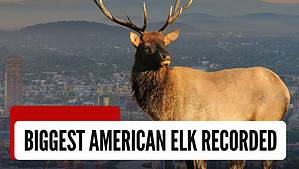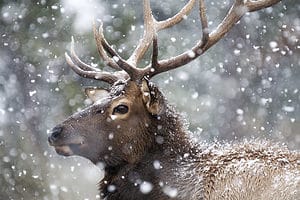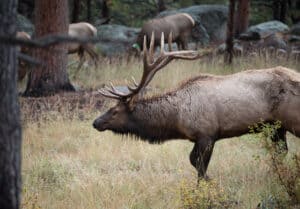
Elk are found all over Washington State. In Washington, there are two subspecies, Roosevelt elk and Rocky Mountain elk. Elk hunting is a popular activity in the state. To hunt and harvest elk, you’ll need to purchase a license/tag. These impressive animals reach massive lengths and weights! They provide a fun challenge for hunters. Have you ever wondered about the size of the largest American elk ever caught in Washington? Follow along to discover the largest American elk ever caught in Washington!
What is the Largest American Elk Ever Caught in Washington?
The largest typical American elk ever caught in Washington scored 420 4/8. Charles F. Gunnier caught this massive American elk in 1990. The second largest typical American elk caught in the state scored 402 6/8 in 2022. What about non-typical American elk? The largest non-typical American elk caught in Washington scored 444 5/8, making it even larger than the typical catch. Russel C. Evans caught this large American elk in 2022. The last elk record in Washington is the largest Roosevelt’s elk. Sam Argo caught Roosevelt’s elk that scored 380 6/8 in 1983.

Elk graze on sedges, grasses, and herbaceous blooming plants in the summer, while in the winter, they feed on woody vegetation such as jack pine, cedar, and red maple.
©Bradley Wakoff/Shutterstock.com
About American Elk
Elk is a large animal species in the deer family. Elk are found across North America and parts of Asia. There are about 6 subspecies found in North America. The two found in Washington are Roosevelt’s elk and Rocky Mountain elk. Two of the six species found in North America are extinct. For instance, Merriam’s elk has been extinct since the 1900s. This subspecies once lived in the southwestern United States and Mexico. Eastern elk are also extinct, although some experts argue that eastern elks were just a distinct population, not a subspecies. They previously lived in the northern and eastern United States and southern Canada.
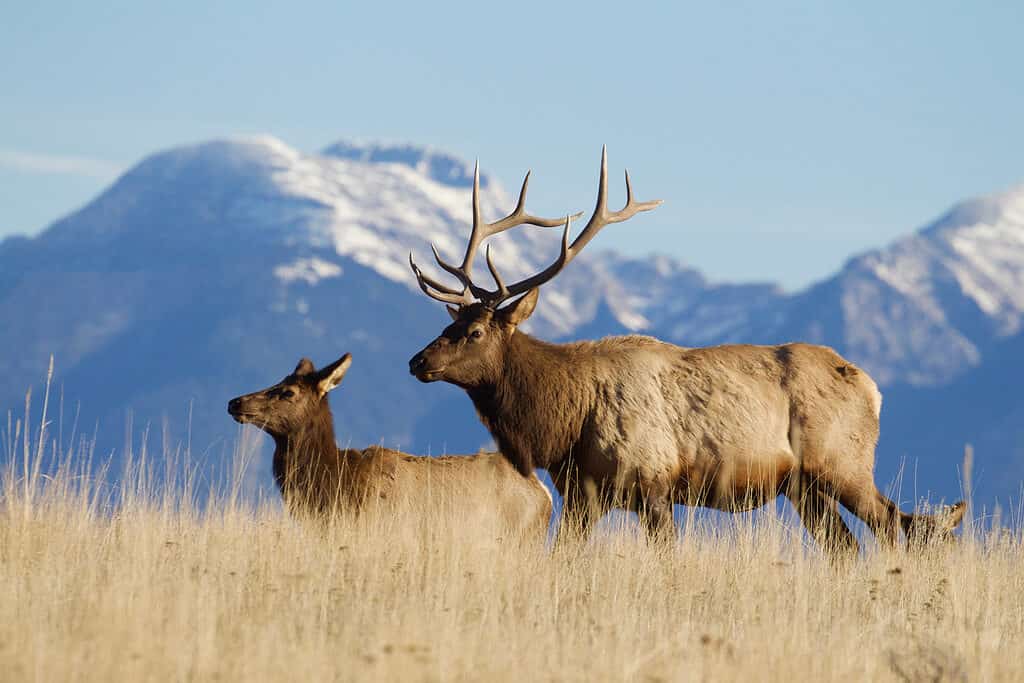
Rocky Mountain elk live in Washington.
©Tom Reichner/Shutterstock.com
Size and Appearance
Elk vary in size and appearance, depending on the subspecies. Roosevelt elk, for instance, are very large. They are about 6 to 10 feet long and stand at 2.5 to 5.6 feet tall. They can also weigh up to 1,300 pounds, although females are a lot smaller weighing about 644 pounds. Rocky Mountain elk aren’t that different. They are slightly smaller, but not by much. They are about 6.5 to 8.5 feet long and 4 to 5 feet tall. American elk have massive antlers. Their antlers grow 0.98 inches a day and are thick.
Diet
While an elk’s diet varies depending on the region, it’s minimal. Elk typically eat vegetation like twigs, shrubs, flowers, mushrooms, and leaves. They are foragers with four-chambered stomachs. Interestingly, elk consume about 3 pounds of food per 100 pounds of weight each day!
Predators
Elk are fast and agile animals. Although fast, they have many natural predators. Wolves, black bears, brown bears, mountain lions, and coyotes hunt elk. However, coyote packs mainly attack young or sick elk, not mature elk.
Distribution
In Washington, elk are found all across the state. In Washington State, there are about 60,000 elk. The biggest elk herd is the Yakima herd of about 12,000 elk. Other large herds include Willapa Hills, Mount St. Helens, Olympic, and Blue Mountains.
Other Mammals in Washington
Elk are just one type of mammal in Washington State. Throughout this state, you can find animals, both large and small, including marine mammals. Here we have some animals you may encounter on your next visit to the Evergreen State.
Virginia Opossum
The first animal on our list is possibly the most common. Virginia opossums are common, and yet not native to Washington State. They likely entered Washington State during the early 1900s. Many were pets that escaped. However, during the Great Depression, Virginia opossums were introduced to the western United States, mainly as a source of food. Interestingly Virginia opossums are the only native marsupial north of Mexico.
Virginia opossums are sometimes also called possums. They are small, slow, and nocturnal animals with a wide range. Not including their tail, they are about 13 to 22 inches long. They weigh anywhere from 4 to 6.5 pounds. Virginia opossums are best known for their defense of ‘playing dead’. When threatened, these small animals will fake their deaths. They can also release a disgusting-smelling green fluid from their anus which deters predators.
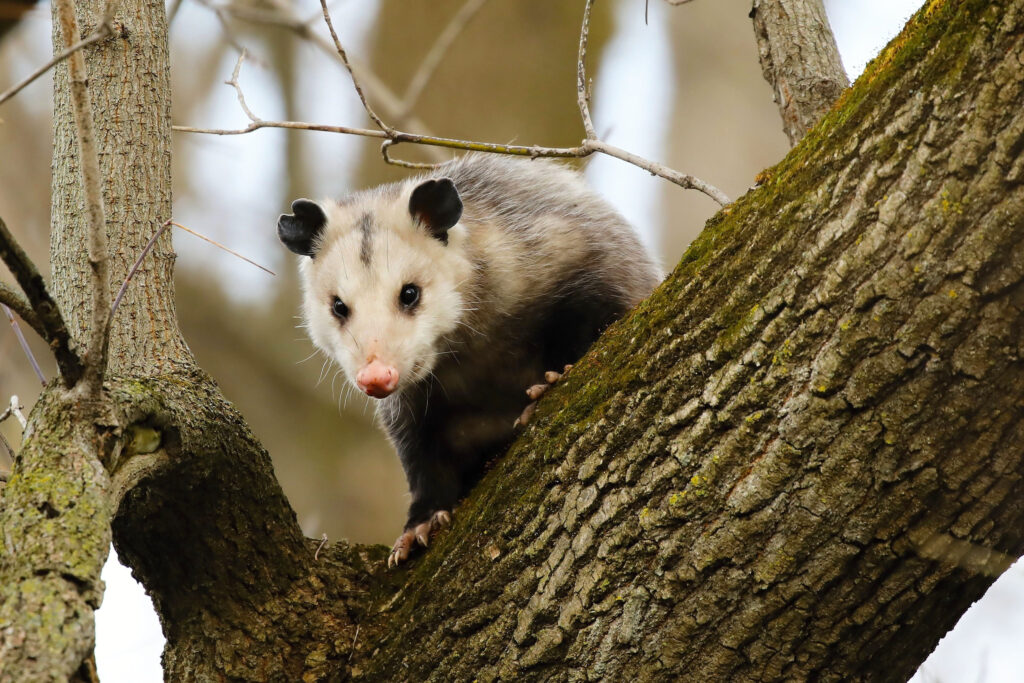
During extreme fear, Virginia opossums fake their deaths.
©Karel Bock/Shutterstock.com
Canyon Bat
Not all mammals spend most of their time on the ground. The next mammal on our list is the canyon bat. This rare, but beautiful bat, is found in at least 10 eastern Washington State counties. They are more common though in the deserts of the southwestern U.S. Canyon bats are vesper bats native to Mexico and the Western United States. While rare, you can find an isolated population of canyon bats in Oklahoma and parts of Texas. Canyon bats are currently listed as Least Concern on the IUCN Red List.
Canyon bats are the smallest bat species in the United States. They are about 2.44 inches long with a wingspan of around 7 inches. These tiny bats are dark brown with light bodies. Canyon bats are furry, except for their wings. They are very active and are one of the first bat species to emerge at night.

Canyon bats are the smallest bats in the United States.
©Dee Carpenter Originals/Shutterstock.com
Snowshoe Hare
Another animal you can find in Washington State is the snowshoe hare. This rabbit is native to North America but is mainly found in the north. Sadly, snowshoe hares are locally extinct in Ohio, Virginia, Tennessee, and North Carolina. Snowshoe hares are common in Washington State. During most of the year, their fur is brown, while during winter their furs are all white or white with brown markings. In Washington State, there are multiple snowshoe hare subspecies, including the Dalques, Rhoads, and Nelson.
Snowshoe hares are about 16 to 20 inches long. They also have very big feet and long, upright ears. Snowshoe hares weigh about 3 pounds. Even during winter, although mainly white, snowshoe hares have black-tipped ears.
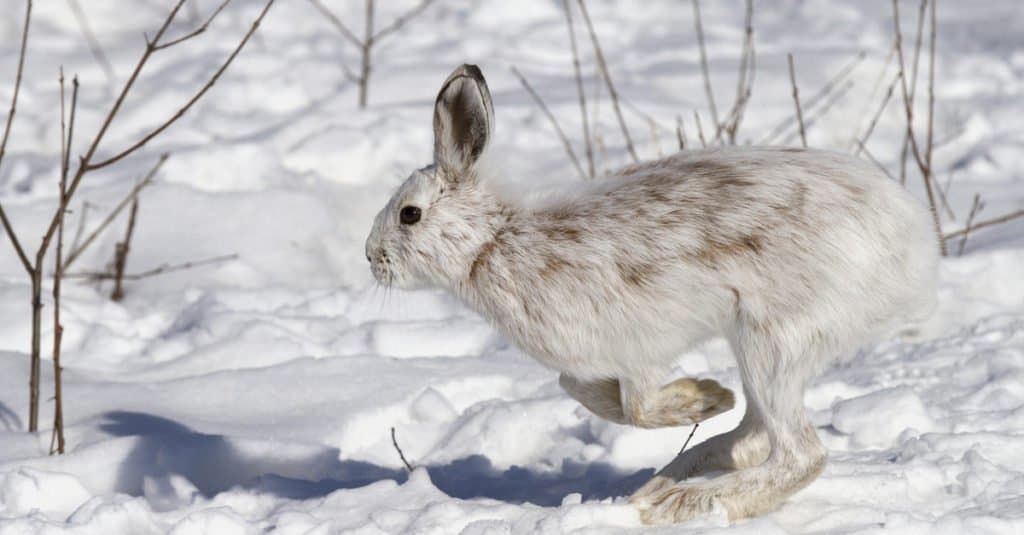
The tips of a snowshoe hare’s ears are black no matter the season.
©Jim Cumming/Shutterstock.com
Cascade Red Fox
The next animal on our list is the red fox. The most well-known red fox subspecies in Washington State is the Cascade red fox, which is endemic to Washington. Sadly, these beautiful animals are listed as Critically Imperilled by the NatureServe conservation status system. Experts aren’t sure how many are left, but it may be as small as five. These foxes are only found in and around the Cascade Mountains. They eat small animals, including birds and mammals like rodents.
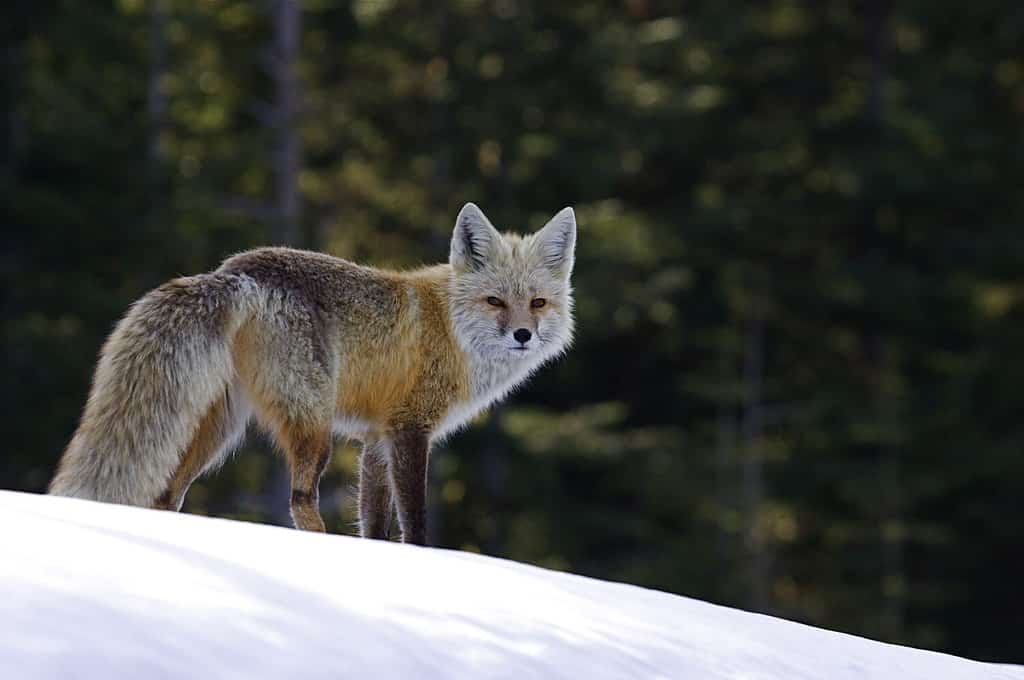
Cascade red foxes are endemic to Washington and sadly Critically Imperilled and Endangered.
©Tom Reichner/Shutterstock.com
Northern Right Whale Dolphin
Last but not least is the Northern right whale dolphin. They are found off the coast of Washington State. Northern right whale dolphins live in the cold waters of the North Pacific Ocean. They are smooth and stream-lined dolphins with a curving back and no dorsal fin. Northern right whale dolphins are listed as Least Concern on the IUCN Red List. These dolphins are very social and sometimes live in groups of up to 3,000 dolphins, although groups of 100 to 200 are more common. They form groups with other species including sperm whales, humpback whales, and Pacific white-sided dolphins.
Northern right whale dolphins are very long, about 6 to 10 feet long. Females though are smaller, but about 130 to 210 pounds.
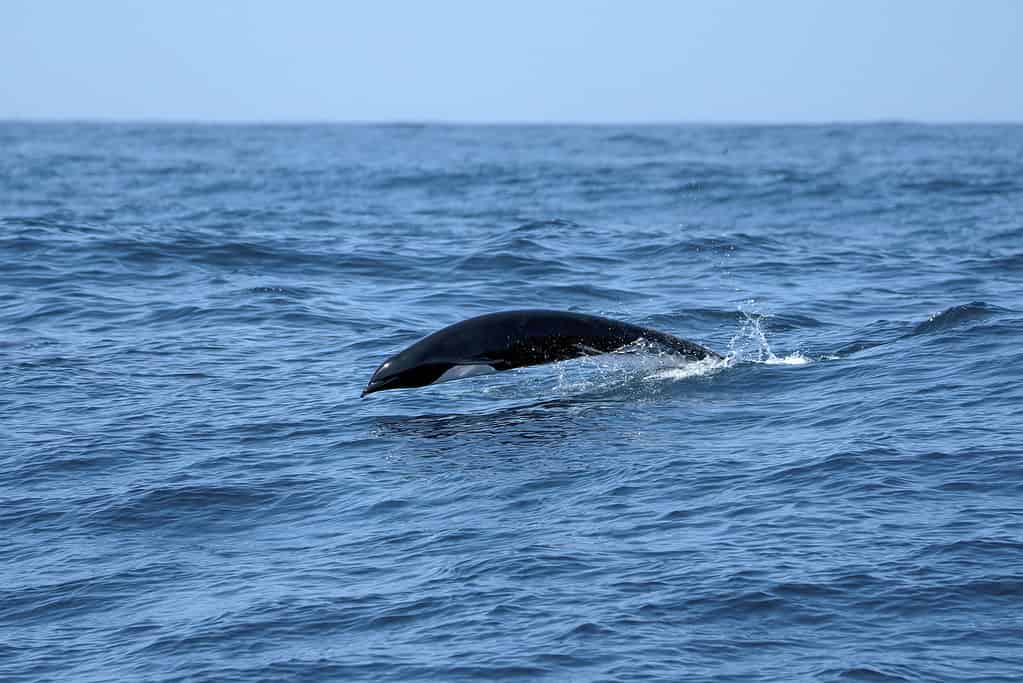
Northern right whale dolphins live in the North Pacific Ocean.
©iStock.com/Kara Capaldo
The photo featured at the top of this post is © Tom Reichner/Shutterstock.com
Thank you for reading! Have some feedback for us? Contact the AZ Animals editorial team.



